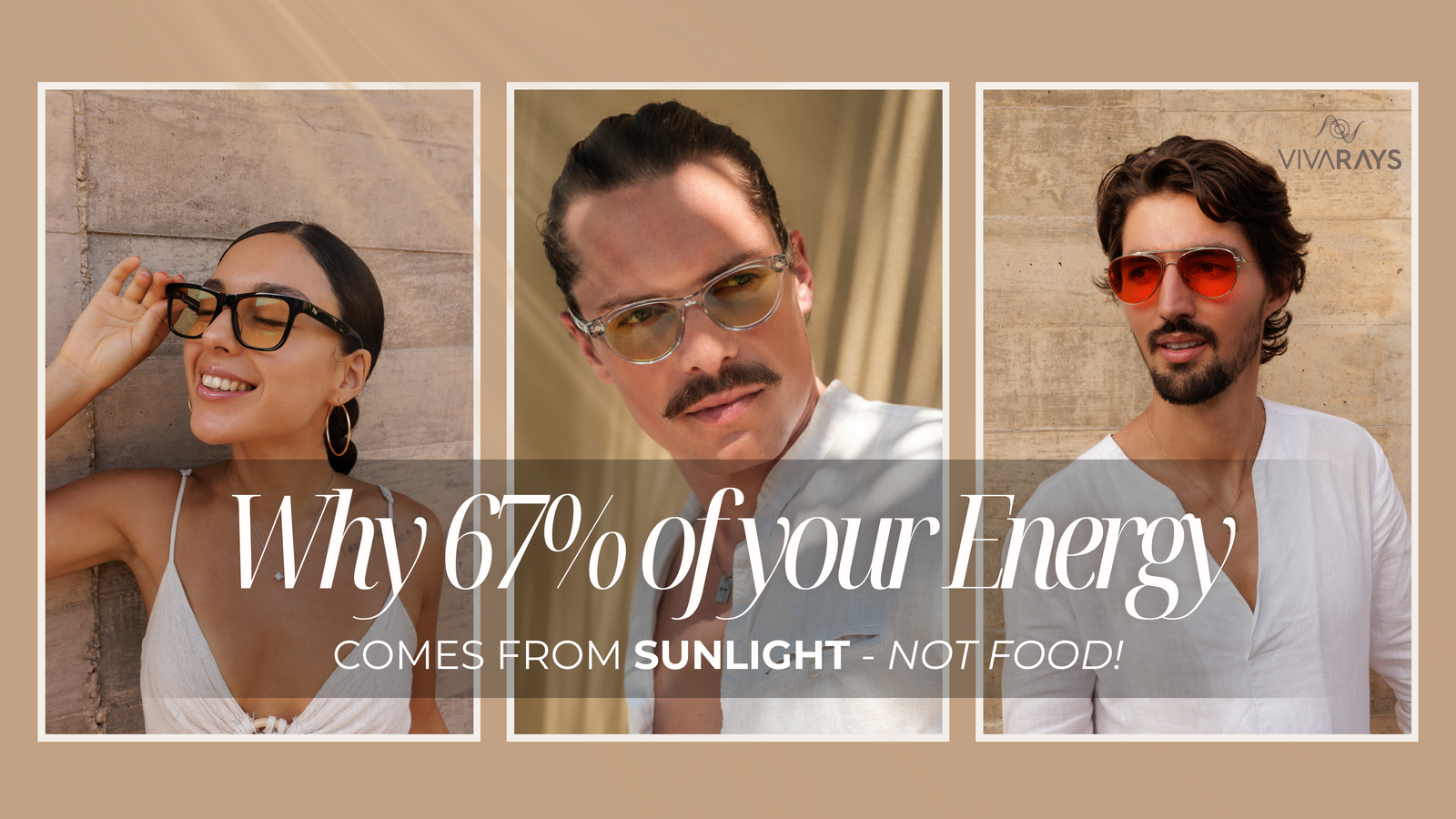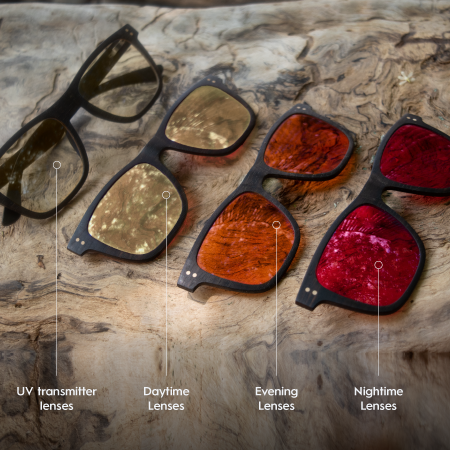Why 67% of Your Energy Comes from Sunlight - Not Food!

The "Light Code" That Unlocks 67% More Cellular Energy (Without Changing Your Diet)
How a forgotten Nobel Prize discovery is helping thousands reclaim their natural energy using nothing but specific wavelengths of light
Good day, Viva Family! ☀️
If you're reading this, chances are you're frustrated.
You eat clean. You exercise regularly. You take your vitamins. You get 8 hours of sleep.
Yet you still wake up feeling like you've been hit by a truck.
You're not alone.
In fact, you're part of a growing group of health-conscious people who are discovering that the conventional approach to energy is missing a crucial component.
And it's not what you think.
The Breakthrough That Changes Everything
Dr. Sarah Chen, a 42-year-old physician from Portland wrote:
"I've been a doctor for 15 years. I know nutrition inside and out. I follow every health protocol to the letter. But I was chronically exhausted. Then I discovered something that changed my life in just 7 days..."
What Dr. Chen discovered isn't new.
In fact, it's been hiding in plain sight for over 80 years. It started with Dr. Albert Szent-Györgyi, the Nobel Prize-winning scientist who discovered Vitamin C.
But his most important discovery wasn't about nutrition at all.
It was about light.
Dr. Szent-Györgyi made a statement that would revolutionize our understanding of human energy:
"We live by a small trickle of electricity from the sun."
He wasn't speaking poetically. He was describing a fundamental truth about human biology that most people still don't understand:
Your body is designed to harvest energy directly from light.
🔆 The "33/67 Rule" That No One Talks About
Here's what the latest research reveals:
Only 33% of your cellular energy comes from food.
The other 67% comes from photons of light absorbed by your mitochondria.
Let me repeat that:
Two-thirds of your energy comes from light, not food.
This explains why you can eat perfectly and still feel exhausted.
You're literally starving your cells of their primary energy source.
How Your "Cellular Batteries" Actually Work
Inside every cell in your body are tiny powerhouses called mitochondria.
These mitochondria produce ATP - the energy currency that keeps you alive.
For decades, we thought mitochondria only needed two things:
-
Fuel (from food)
-
Oxygen (from breathing)
But cutting-edge research published in Scientific Reports revealed a third requirement:
3. Light (specific wavelengths of photons)
Your mitochondria contain light-sensitive molecules called chromophores.
When these molecules absorb red and near-infrared light (660-1000nm), something remarkable happens:
-
ATP production increases dramatically
-
Cellular repair accelerates
-
Energy efficiency skyrockets
In one experiment, shining near-infrared light on cells increased their ATP production without any change in diet or nutrients - effectively "charging" the cellular batteries with light alone.
Research published in Scientific Reports noted that longer-wavelength light (660–1000 nm) significantly improved mitochondrial ATP output and even increased physical performance in models of aging.
The mechanism is often described as photobiomodulation (PBM): photons of red/NIR light are absorbed by cytochrome c oxidase, which leads to more efficient electron transport and proton pumping in mitochondria, thus synthesizing more ATP.
But here's the critical balance:
Natural sunlight contains a balanced spectrum - it has both long wavelengths (red/infrared) and shorter wavelengths (blue/UV) in a proportion that life evolved with. This balance means that in sunlight, the stimulating effects on mitochondria (red/NIR) are naturally tempered by the other wavelengths.
However, blue light (around 400–450 nm), if isolated in excess, can be stressful to cells - it's absorbed by other molecules (like porphyrins) and tends to increase reactive oxygen species (ROS), inhibiting mitochondrial function.
In modern life, we often get unbalanced light, which can confuse our cells.
The Modern "Light Starvation" Crisis
Here's the problem:
You're living in an environment that's starving your mitochondria.
The average person spends 93% of their time indoors under artificial lighting that's:
-
500x dimmer than natural sunlight
-
Spectrally imbalanced - Heavy in blue wavelengths (~455 nm) with virtually none of the red/infrared that sunlight provides
-
Metabolically confusing - Fluorescent and LED lights common in homes and screens spike in blue wavelengths and have very little red or infrared
Studies show that excessive blue light exposure generates more reactive oxygen species (ROS) and can lower mitochondrial efficiency. In contrast, the red/infrared component of sunlight (which is largely missing indoors) normally offsets this by boosting ATP and mitigating oxidative stress.
Indoor lighting mimics a sort of "eternal noon" with lots of blue and no infrared, which may strain metabolism and disrupt circadian signals.
The "Filtered Light" Problem
Even when we do see the sun, we often filter it:
Glass windows block most UVB and a good portion of UVA and infrared. That means if you're indoors by a sunny window, you might feel some warmth and see light, but you aren't getting the UV wavelengths that produce vitamin D or nitric oxide.
Sunglasses, Eyeglasses, contact lenses, and car windshields have UV coatings - protecting your eyes but also preventing natural UV from reaching light-sensitive receptors in the retina that set your circadian rhythm.
Sunscreen blocks UV (useful for preventing sunburn with long exposures) but also eliminates the UVB needed for vitamin D synthesis and the UVA that releases nitric oxide.
The "Light Protocol" That's Changing Lives
This is where Dr. Chen's story gets interesting.
After discovering this research, she implemented what she calls the "Circadian Light Protocol":
Morning: 15 minutes of direct sunlight within 30 minutes of waking
Midday: 10-minute "sun break" for vitamin D and nitric oxide
Evening: Sunset viewing to signal nighttime physiology
The results?
"Within one week, I was waking up naturally without an alarm. My energy was steady throughout the day. No more 3 PM crashes. It was like someone flipped a switch in my cells."
☀️ The Science Behind The Transformation
When you optimize your light exposure, your body responds at the cellular level:
Morning Light:
-
Triggers 35% cortisol surge (healthy metabolic boost)
-
Synchronizes circadian rhythm
-
Improves glucose uptake all day
UVA Exposure:
-
Releases nitric oxide for better circulation
-
Boosts serotonin for mood and appetite control
UVB Exposure:
-
Enables vitamin D production
-
Triggers natural endorphin release
Red/NIR Light:
-
Powers mitochondrial ATP production
-
Reduces oxidative stress
-
Accelerates cellular repair
The result is a complete metabolic transformation.
Summer: Your Golden Opportunity for Natural Energy
Right now, you have an incredible advantage.
It's summer - which means you have access to the most powerful energy source on the planet for 8+ hours every day.
This is the perfect time to experience the transformation that natural light can create.
Instead of relying on devices, you can harness the full spectrum of sunlight that your mitochondria are designed to use.
The research is clear: people who prioritize natural light exposure during summer months often experience the most dramatic improvements in energy, sleep, and metabolism.
Why? Because summer gives you:
-
Longer daylight hours for optimal circadian signaling
-
Stronger red/infrared wavelengths that penetrate deep into tissue
-
Full-spectrum UV for vitamin D and nitric oxide production
-
Perfect timing to establish healthy light habits
The Two-Sided Light Equation
Here's what most people don't realize:
Optimizing light isn't just about getting MORE light during the day - it's equally about getting LESS light at night.
Bright artificial lighting after sunset - especially the blue-rich glow of LEDs, screens, and TVs - sends a misleading daytime signal to your brain.
This suppresses melatonin, the "hormone of darkness" essential for sleep and nighttime cellular repair.
A 2022 study found that healthy adults who slept with moderate ambient light (around 100 lux, like a dim bedside lamp) showed elevated heart rates and increased insulin resistance by the next morning compared to sleeping in darkness.
Their bodies remained in stress-alert mode overnight instead of the normal restorative state.
Another experiment found that people exposed to standard LED light before bed had significantly lower fat-burning during sleep compared to those under reduced blue wavelengths.
Normally, your body burns fat for energy during sleep. Blue light short-circuits this metabolic switch.
A massive study of over 43,000 women found that those who slept with a TV or bright light on were significantly more likely to become overweight over five years. Women sleeping in light-filled rooms had 17% higher odds of gaining at least 11 pounds compared to those sleeping in darkness.
This link persisted even after controlling for diet, physical activity, and sleep duration - proving it's the light itself causing weight gain.
When your internal clock stays out of sync (dim days, bright nights), hormones like leptin and insulin lose their timing, promoting fat storage and hindering blood sugar control.
Artificial light at night is a hidden saboteur - it quietly undermines all the benefits of healthy food and daylight.
But this summer, make natural sunlight your priority. Use this season to establish the habits that will serve you year-round, and discover just how powerful proper light exposure can be when you have unlimited access to the sun.
the morning had significantly lower BMI than those who got light later in the day.
Same diet. Same exercise routine. Same genetics.
The only difference was light timing.
Light exposure alone accounted for 20% of the variance in body weight.
The researchers concluded:
"Light is the most potent agent to synchronize your internal body clock... If a person doesn't get sufficient light at the appropriate time of day, it could desynchronize your internal clock, which is known to alter metabolism and lead to weight gain."
Your 7-Day Light Transformation
Here's exactly what I want you to do:
Day 1-3: Natural Light Foundation
-
Get 15 minutes of morning sunlight in your eyes (no sunglasses)
-
Take a 10-minute midday sun break
-
Watch the sunset when possible
Day 4-7: Add Targeted Support
-
Continue natural light exposure
-
Wear Vivarays Circadian Nightime Glasses starting 1 hour before bedtime
-
Focus on consistency over perfection
Track these metrics:
-
Energy levels (1-10 scale)
-
Wake-up time (natural vs. alarm)
-
Afternoon energy crashes
-
Sleep quality
Most people notice changes within 3-7 days
The Simple Truth About Energy
Your ancestors lived in perfect harmony with natural light cycles.
Intense, full-spectrum sunlight during the day. Complete darkness at night.
Their reward? Abundant energy, stable moods, optimal metabolism.
Today, we live under weak, artificial light that confuses our biology.
But the solution isn't complicated:
Give your cells the light they're designed to use.
The Missing Piece In Your Health Routine
You wouldn't expect a plant to thrive without sunlight.
Your mitochondria have the same requirement.
Light isn't just helpful for energy - it's essential.
The research is clear. The mechanism is understood. The results speak for themselves.
Your Next Step
Tomorrow morning, I want you to try something simple:
Step outside within 30 minutes of waking up. Look toward the sun (not directly at it) for 10-15 minutes. No sunglasses. No windows between you and the sky.
Notice how you feel throughout the day.
This one change could be the breakthrough you've been searching for.
Because the truth is, you're not broken. You're not genetically cursed to be tired.
You're just missing a fundamental piece of human biology.
And now you know exactly how to reclaim it.
To Your Energy and Vitality, ☀️
The VivaRays Team
PS: Please drop your comments/questions in the comment section below and we will answer them in our next blog!
References
- Popp, F.A. et al. “Biophoton emission” – evidence that human cells emit and communicate with lightprlabs.com.
- Szent-Györgyi, A. – Quote on living by a trickle of the sun’s electricityprlabs.com; Premier Research Labs commentary on humans as “light batteries”prlabs.com.
- Midwest Red Light Therapy – Discussion of sunlight vs. food contribution to ATP (1/3 from food, 2/3 from sunlight)midwestredlighttherapy.com.
- Jeffery, G. et al. (2025). Scientific Reports 15:24435. – Long-wavelength red/infrared light penetrates the body, increases mitochondrial ATP production, and systemically improves functionnature.comnature.com. Also notes that shorter blue light can impair mitochondria via ROSnature.com.
- Scheer, F.A. et al. (1999). J. Clin. Endocrinol. Metab. 84(9):3395-8. – Morning light exposure amplifies the post-awakening cortisol surge by ~35%pubmed.ncbi.nlm.nih.gov, highlighting light’s role in metabolic hormonal signaling.
- Wong, K. et al. (2014). PLOS ONE 9(4): e09225. – Timing of light exposure affects BMI: Early daylight exposure correlates with lower BMI, independent of caloric intakenews.northwestern.edunews.northwestern.edu. Insufficient morning light can desynchronize circadian rhythms and promote weight gainnews.northwestern.edunews.northwestern.edu.
- Weller, R. et al. (2014). J. Invest. Dermatol. 134(7):1839-46. – Demonstrates that UVA radiation releases nitric oxide in humans, causing vasodilation and blood pressure reductionen.wikipedia.org (beneficial for cardiovascular and metabolic health).
- Prendergast, B. et al. (2002). – Sunlight and serotonin: Bright light exposure is linked to higher serotonin levelsand improved mooden.wikipedia.org, explaining part of light’s energizing effect.
- Fisher, D.E. et al. (2014). Cell 157(7):1524-34. – UV light triggers skin production of β-endorphin, elevating endorphin levels and contributing to UV’s feel-good (and addictive) effectspmc.ncbi.nlm.nih.gov. Endorphins may reinforce sun-seeking and provide analgesic and mood benefits.
- Tiwary, V. et al. (2023). Trends Biochem. Sci. 48(11):920-922. – Perspective: using light to fuel mitochondriacould improve energy transduction and lifespanpmc.ncbi.nlm.nih.govpmc.ncbi.nlm.nih.gov. Points to the exciting potential of harnessing photonic energy in health and aging.




Leave a comment